other
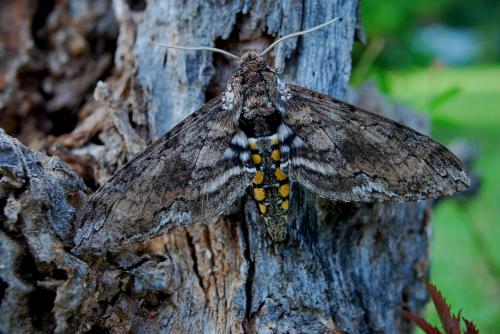
Blackburn’s Sphinx Moth - Manduca blackburni
The Blackburn’s sphinx moth is a large, gray moth endemic to Hawaii that can have a wingspan up to 5 inches. Its larvae come in bright green or purple/gray color variations and feed on native Hawaiian trees like ‘aiea. Though once widespread across the islands, the Blackburn’s sphinx moth is now limited to populations on Maui, Kahoolawe, and Hawaii. Threats include habitat loss, non-native species, and small population sizes. Conservation efforts involve habitat restoration, establishing new populations, and monitoring host plants. The Blackburn’s sphinx moth remains critically endangered due to its restricted range and small number of surviving populations.
‘Ekaha kū moana (black corals) - A. grandis
Black corals are a taxonomic order of corals that occur in Hawaiian waters, including several endemic species. They have flexible, horny skeletons and lack the polyp stage of other corals. Black corals grow slowly in deep water, providing habitat for many invertebrates. Some species are harvested for the precious coral fishery. Threats include overharvesting and competition from invasive species. Conservation involves fisheries management, preventing new invasions, and protecting remaining populations of Hawaiian black corals.
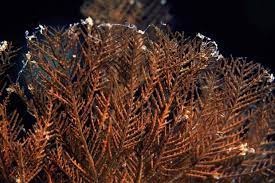
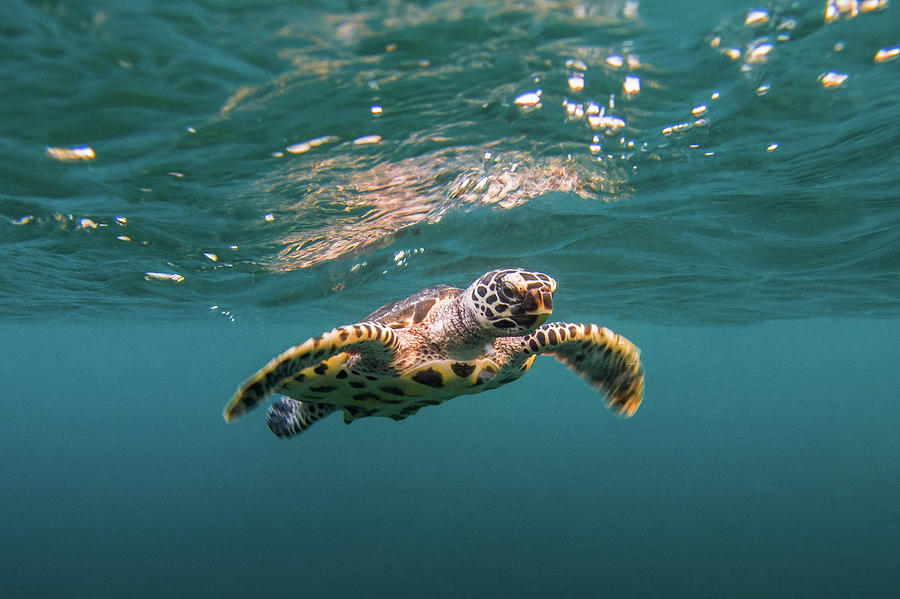
Hawksbill sea turtle - Eretmochelys imbricata
The hawksbill sea turtle is a critically endangered turtle found in Hawaiian waters that nests on beaches of the main islands. It inhabits coral reefs and feeds primarily on sponges and algae. With fewer than 20 breeding females, Hawaiian hawksbill populations are threatened by habitat degradation, fisheries bycatch, predation, marine debris, and climate change. Hawksbills mature slowly, taking 15-20 years to reach breeding age. Conservation involves protecting nesting beaches, reducing bycatch, and decreasing marine pollution and debris. The Hawaiian hawksbill is endangered globally and locally due to its small population size and restricted breeding habitat.
He‘e - Octopus hawiiensis, Mūhe‘e - Euprymna scolopes
The Hawaiian octopus and bobtail squid are endemic cephalopods found in Hawaiian waters. The nocturnal Hawaiian octopus preys on crabs and mollusks while the bobtail squid eats shrimp. Both have complex mating behaviors and the octopus guards its egg clusters. Threats include habitat degradation from sedimentation and pollution as well as overcollection. Very little is known about the biology and populations of these endemic cephalopods. Protecting water quality and habitat, enforcing take regulations, and further research are conservation priorities for Hawaiian octopus and bobtail squid.
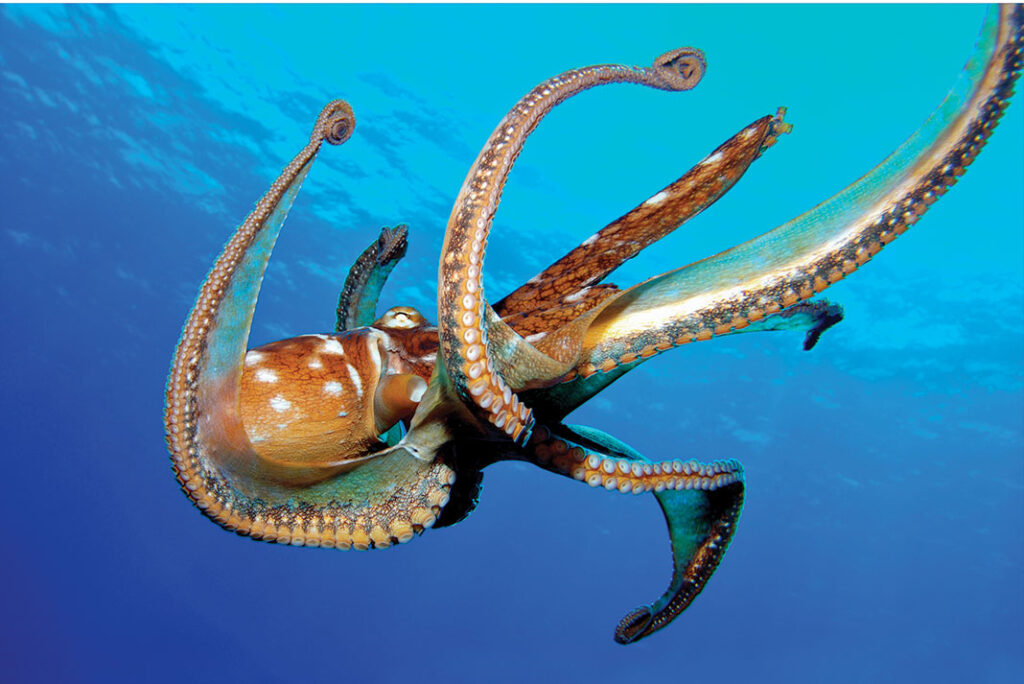
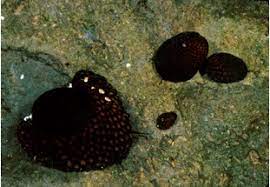
Hīhīwai - Neritina granosa , Hapawai - Neritina vespertina
The hīhīwai and hapawai are large, endemic Hawaiian freshwater snails reaching up to 2 inches long. They graze on algae in streams and estuaries. After hatching, the larvae drift downstream to the ocean to develop before returning upstream. Though once abundant, they are declining due to habitat degradation, water diversions, and overharvesting. Remaining threats include pollution, barriers to upstream migration, and low stream flows. Conservation involves protecting and restoring stream habitats and maintaining healthy populations across the Hawaiian Islands.
Honu (green sea turtle) - Chelonia mydas
The honu or green sea turtle is an herbivorous turtle found throughout Hawaiian waters that nests primarily on the Northwestern Hawaiian Islands. It inhabits coral reefs and seagrass beds, maturing slowly and reaching breeding age around 35-40 years old. Though globally endangered, Hawaiian green sea turtle populations appear to be increasing, with about 400 breeding females. Threats include habitat degradation, fisheries bycatch, the tumor-causing disease fibropapillomatosis, and marine debris. Conservation involves protecting nesting beaches and coastal habitats, reducing bycatch, and decreasing marine pollution. The iconic honu remains dependent on continued conservation to recover from historical overexploitation.
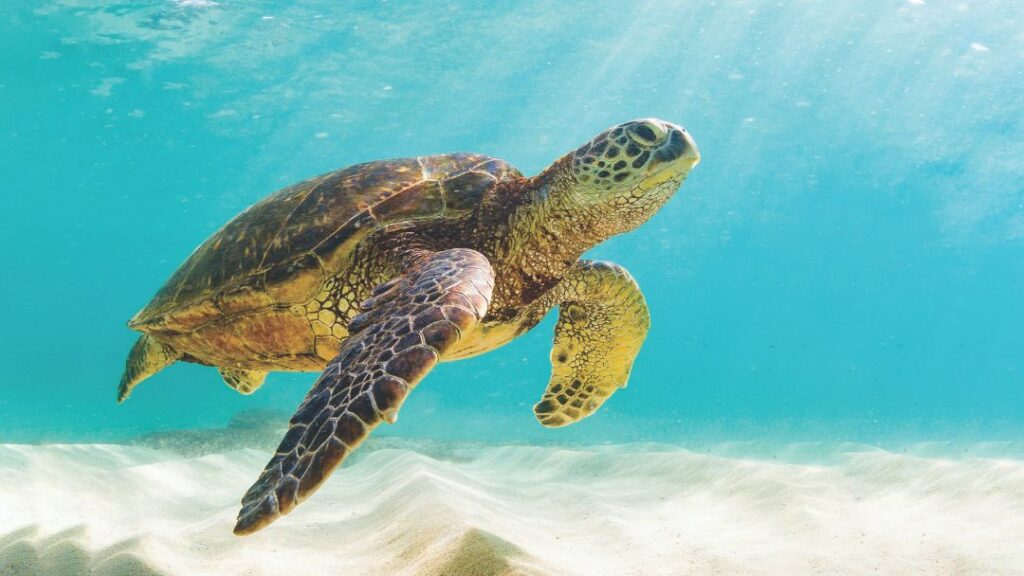
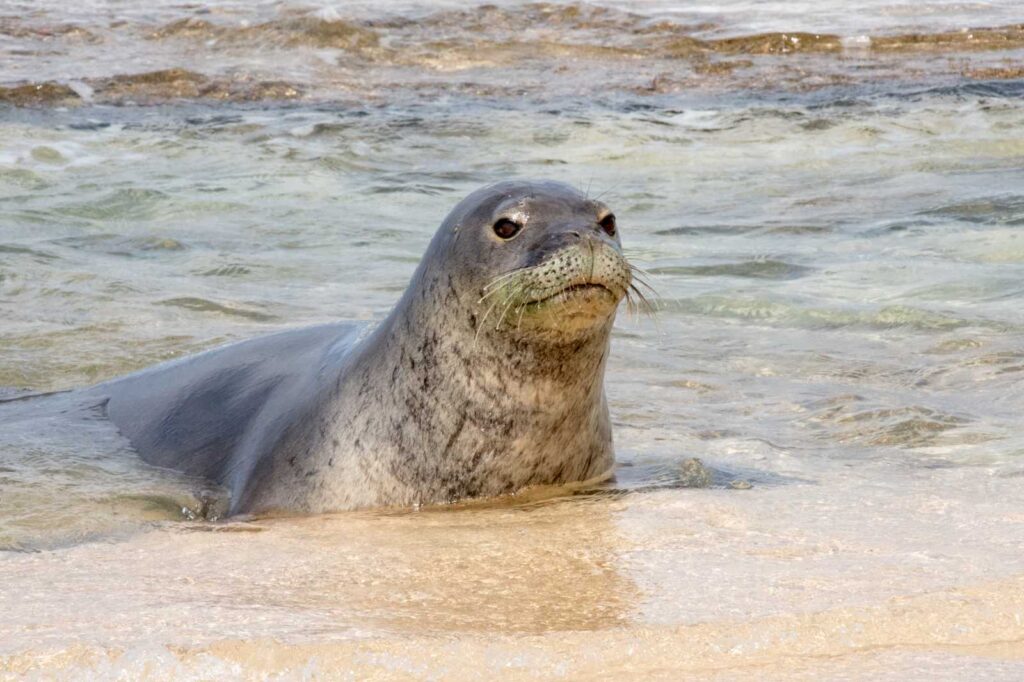
ʻĪlioholoikauaua (Hawaiian Monk Seal) - Neomonachus schauinslandi
The Hawaiian monk seal is an endangered marine mammal found throughout the Hawaiian Islands, mostly in the Northwestern Hawaiian Islands. It is a benthic feeder, preying on reef fish, octopus, squid, and lobster. Hawaiian monk seals use beaches for pupping, nursing, and resting. With around 1,200 total individuals, the species is threatened by human disturbance, entanglement in marine debris, habitat loss, disease, predation, and prey availability. Conservation efforts include protecting habitat, minimizing fishery interactions, controlling predators, and managing disease risks. The Hawaiian monk seal remains critically endangered due to its small population size and range limited to Hawaii.
Koholā (Humpback whale) - Megaptera novaeangliae
The humpback whale, or koholā, is a large baleen whale that migrates seasonally to Hawaiian waters to mate, calve, and nurse young. Known for its acrobatic behavior and haunting songs, the humpback whale feeds little in Hawaii. Hunted heavily in the past, its population has recovered to about 10,000 individuals in Hawaii. Threats include entanglement in fishing gear, collisions with vessels, marine pollution, and underwater noise pollution. Conservation involves protecting habitat, reducing disturbances, disentangling whales, and enforcing safe viewing distances. The iconic humpback whale remains endangered in Hawaii despite rebounding from severe depletion.
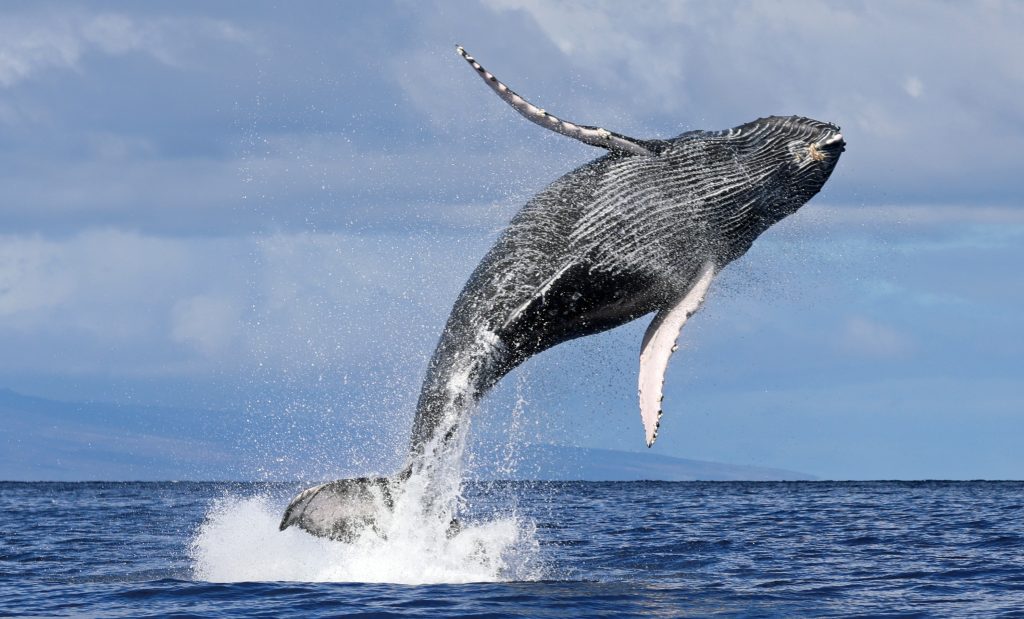
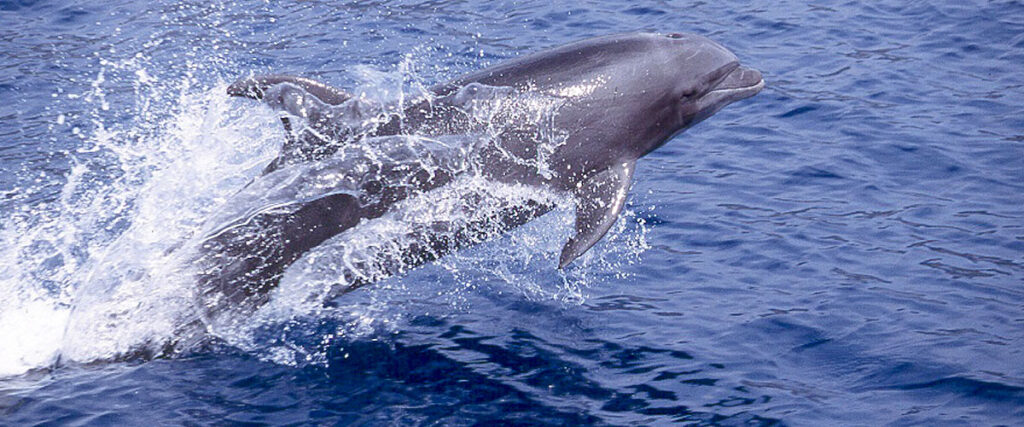
Naʻia (bottlenose dolphin) - Tursiops truncatus
The bottlenose dolphin, or nai’a, is a highly social and intelligent dolphin found throughout the Hawaiian Islands. It feeds on fish and invertebrates in shallow coastal waters and deeper channels. Bottlenose dolphins are threatened by entanglement in fishing gear, marine debris ingestion, noise pollution, habitat degradation, and disturbance from tourism. Though still common globally, Hawaiian populations face increasing threats from human activities and coastal development. Conservation involves reducing pollutants and entanglement, enforcing protection laws, and promoting responsible dolphin viewing practices. The bottlenose dolphin serves as an indicator species for the health of Hawaii’s nearshore marine ecosystems.
Naiʻa (spinner dolphin) - Stenella longirostris
The spinner dolphin, or nai’a, is a highly social and acrobatic dolphin found around all the Hawaiian Islands. It feeds cooperatively at night in deep offshore waters, then rests in shallow bays during the day. With about 3,200 total individuals, spinner dolphins in Hawaii are threatened by human disturbance from dolphin tourism, entanglement in fishing gear and marine debris, vessel collisions, and habitat degradation. Their nearshore habitat makes them particularly vulnerable to human activities. Conservation involves protecting habitat, enforcing safe viewing distances, reducing marine debris, and promoting dolphin-friendly tourism practices. The spinner dolphin remains dependent on conservation to offset increasing threats around the populated Hawaiian Islands.
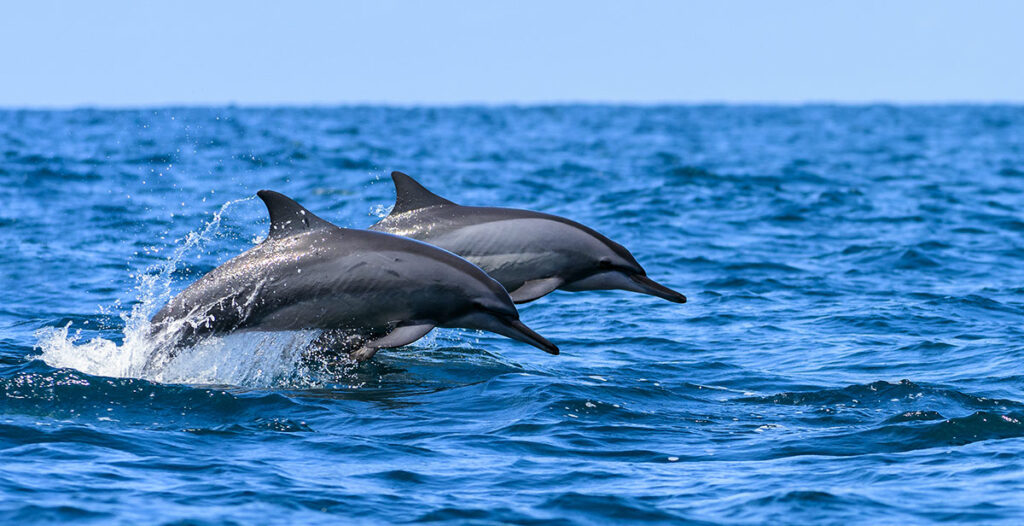

Oceanic Hawaiian damselfly - Megalagrion oceanicum
The oceanic Hawaiian damselfly is a large, red and green damselfly endemic to Oahu. The males are mostly bright red while females are dull green and dark. It inhabits fast-flowing streams in montane forests to breed. With only 12 known populations left, it is threatened by habitat loss from erosion and predators like invasive fish and frogs. Conservation efforts involve protecting existing populations and breeding habitats. The oceanic Hawaiian damselfly is endangered due to its small numbers and restricted range.
‘Ōpaekala‘ole - Atyoida bisulcata
The mountain shrimp is a spineless, endemic Hawaiian shrimp reaching up to 2 inches long found in fast-flowing streams. It filters food from the water column and scavenges material from the bottom. After hatching, larvae drift downstream to the ocean before returning upstream to mature. Though once common, the mountain shrimp is now declining due to habitat destruction, water diversions, and overharvesting. Remaining threats include pollution, barriers to upstream migration, and introduced competitors. Conservation involves protecting and restoring stream habitats across the Hawaiian Islands.
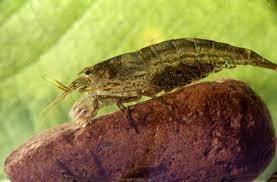

‘Ōpae ‘oeha‘a - Macrobrachium grandimanus
The Hawaiian prawn is an endemic shrimp growing up to 3 inches long found in Hawaiian streams and estuaries. It has asymmetric pincer claws and scavenges plant and animal material from stream bottoms. After hatching, larvae drift downstream to the ocean before returning to mature in freshwater. Though once widespread, the Hawaiian prawn is now restricted by habitat loss and introduced competitors. Remaining threats include pollution, habitat alterations, and predation. Conservation involves protecting and restoring stream habitats across the Hawaiian Islands.
Pīpīwai - Clithon cariosus
The Clithon and Neritilia snails are small, endemic Hawaiian freshwater snails that can tolerate brackish water. They likely feed on algae and vegetation in streams and estuaries. After hatching, the larvae drift downstream to the ocean to develop before returning upstream. Though once widespread, they are now declining due to habitat degradation and pollution. Remaining threats include water quality decline and overharvesting. Conservation involves protecting and restoring streams, estuaries, and anchialine pools across the Hawaiian Islands.
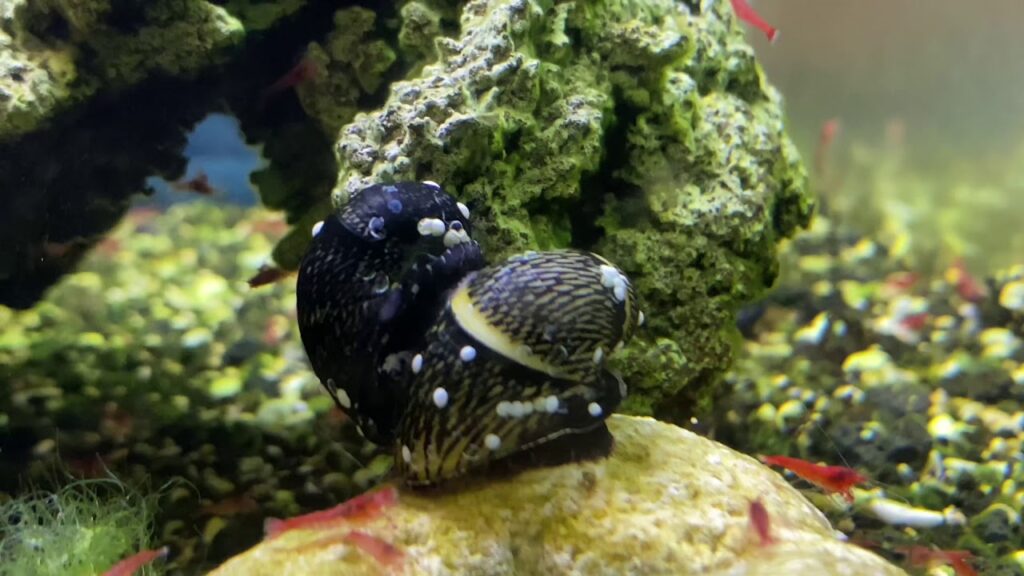
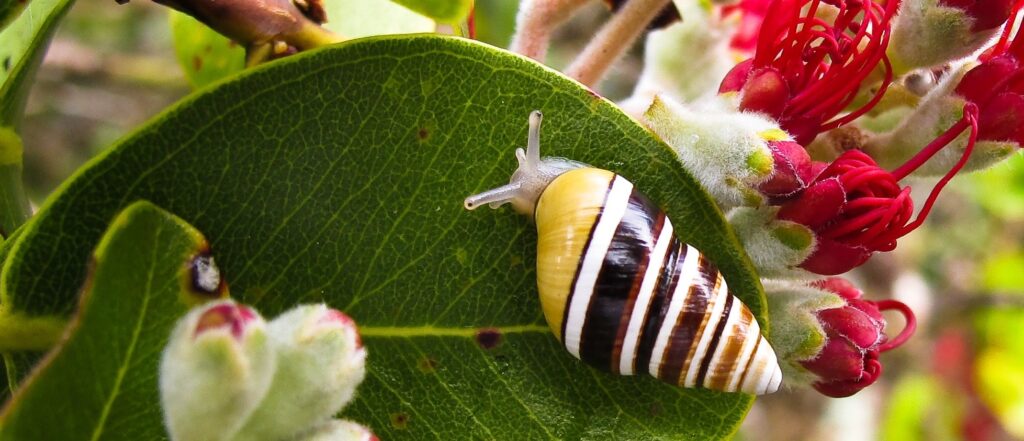
Tree Snails (Oʻahu) - Achatinella spp
O’ahu tree snails are small, colorful, and glossy tree snails endemic to O’ahu, with 41 species historically known but only 19 remaining. They inhabit native forests and shrubs where they feed nocturnally on fungi growing on leaves. Once abundant and widespread, O’ahu tree snails now have restricted ranges and populations due to habitat loss and introduced predators like rats. Remaining threats include invasive plants, continued predation, and low reproductive rates. Conservation involves protecting habitats, captive breeding, and controlling non-native predators. O’ahu tree snails remain critically endangered with most species extinct or near extinction.
Ula poni - Panulirus marginatus
The spiny lobster, or ula poni, is an endemic lobster found throughout the Hawaiian Islands. It lacks large pincers and has asymmetrical antennae. Spiny lobsters inhabit crevices and forage on sandy bottoms near reefs. Once heavily fished, remaining threats include overharvesting and habitat degradation. The spiny lobster has complex migrations, drifting as larvae for almost a year before returning to reefs. Conserving the spiny lobster involves fisheries management, habitat protection, and maintaining connectivity across the Hawaiian archipelago.
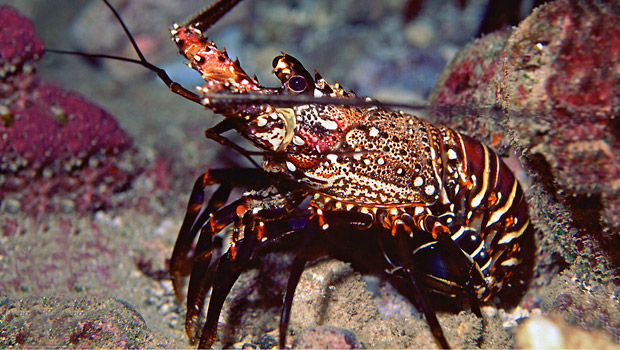

Yellow-faced bee - Hylaeus anthracinus
The yellow-faced bee is a medium-sized, coastal bee endemic to the main Hawaiian islands except Kauai and Niihau. It has three distinct genetic populations on Hawaii, Maui/Kahoolawe, and Molokai/Oahu. The yellow-faced bee feeds on nectar and pollen from native plants like naupaka and ilima. Due to extensive habitat loss, it is now restricted to small populations in marginal areas. Threats include invasive plants, habitat degradation, and competition from introduced bees. Conservation efforts involve habitat protection, establishing new populations, and additional surveys.
